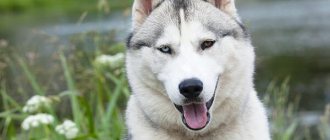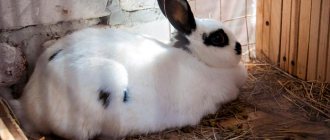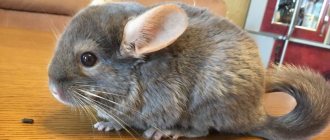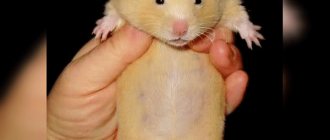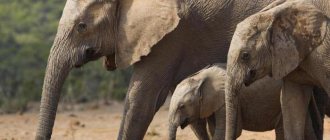Chinchillas are mammals, and mammals reproduce by mating. So do chinchillas have mating seasons like other animals? And if so, when are they?
When is chinchilla mating season? Chinchillas mate in late winter - early spring. However, pet chinchillas can mate at any time as long as they are kept in a controlled temperature and light environment. Thus, the idea of a “mating season” is not entirely relevant to breeders.
Do chinchillas have a mating season?
Most mammals have some sort of mating season, including chinchillas. This is because at certain times having children is a good idea and at others it is not.
We are used to living in luxury; we are completely disconnected from the realities of life in the wild. In the wild, most animals can successfully reproduce only in early spring and summer. This is because there is plenty of food to eat in late spring and early summer, which means the mother can stay healthy while she is pregnant and carrying her young. This also means that when the offspring are finally born, there will be plenty of food around, increasing their chances of survival.
How do pets mate?
Males court females both during the day and at night, but mating usually occurs only at night. You can tell that mating has taken place by the presence of shreds of fur on the floor; this is also the dried seminal fluid of the male; it looks like a white rope.
The duration of sexual intercourse is only a few seconds. The male jumps on the female, bites the fur on her back with his teeth, and then the process of intercourse occurs.
When the process of conception begins, a vaginal plug can be noticed in the female’s body; it is necessary to protect the pregnant woman’s body from possible infection, and it is also a warning against repeated matings.
Reference. Pregnancy lasts for 105–115 days and ends with the birth of offspring.
When is chinchilla mating season?
Wild chinchillas have a mating season during the winter months until late spring. This is different from many other animals, which only begin to reproduce as spring approaches and into summer.
Chinchillas breed early because they have a long gestation period. While other rodents only gestate for a couple of weeks, chinchillas take an average of 110-111 days to produce a litter. This means that if a chinchilla mates during the winter months, she will have offspring when spring arrives and will have plenty of food.
For some animals, the mating season is not so strictly defined. This is because many habitats, such as the rainforest, offer food and suitable temperatures year-round.
That being said, the idea of a mating season is not relevant if you plan to breed your own chinchillas for reasons that we will look at a little later.
Does a chinchilla have a mating cry?
Pets do not have a loud and obvious mating cry, like some other animals. But they do have noises that they make, particularly related to excitement and interest in breeding and certain behaviors that you will notice when they are there.
When a male or female is interested in mating, they emit a series of squeaks. They don't sound too different from the squeaks chinchillas usually make, so they might not be immediately recognizable if you're not familiar with them. Your pet will accompany them in what owners call the “whistling tail” dance, which is exactly what it sounds like. The male will flick his tail in an attempt to attract the female's attention. If she's interested, she'll show him her ass and he'll sit on it.
conclusions
Chinchilla fur occupies a strong place in the global fur market. But this is not a mass product, but an expensive exclusive product. Accordingly, those who buy it are very demanding on quality. This means that if you are planning to open a chinchilla breeding farm, you must first of all purchase expensive, preferably imported, breeding specimens. You will receive your breeding herd no earlier than in 2–3 years.
In addition, you need to rely on your own slaughter and sanding. It is not profitable to trade young animals. Finding buyers for a really good product will not be difficult. It is more difficult to produce high-quality products: it is about 1,000 identical good skins.
In Russia, the number of “chinchilla” enthusiasts is increasing every year, but so far there are few farms with more than 300 chinchillas. Most of them make ends meet by selling breeding animals, feed and related materials. Wholesale resellers make money mainly from fur.
Can chinchillas get pregnant at any time?
Wild chinchillas cannot become pregnant at any time convenient for them. There are two main reasons for this:
- Female chinchillas that are not in heat will immediately reject males.
- If a female had offspring out of season, the offspring would die, and caring for them could even kill her . Any chinchillas that did this did not have offspring, unlike seasonal breeders. Thus, natural selection means that females refuse to have out-of-season offspring.
But what applies to wild chinchillas does not always apply to domestic chinchillas. Domestic chinchillas live in completely different conditions, so they can mate at any time of the year.
Matching
The time for mating of rodents is selected taking into account the age of the female and male. Sexual maturity in females begins at six months of age. For a female of this age, the partner must be three months older. And for an individual older than a year, it is better that the male is several months smaller. But this is not the main thing in choosing a couple. Important conditions in choosing partners for mating:
- it is necessary to have the same breeding characteristics;
- be from a purebred breed with good genetics;
- have good health;
- have fur of the same color and quality;
- do not create related pairs until the third generation.
Fat or very thin animals are not mated to produce viable offspring. The rodents are placed in separate cages and their behavior is monitored. Then a male is placed in the female’s cage. If the animals’ behavior is not aggressive, then the transplantation was successful. There are times when chinchillas begin to conflict, then it is better not to mate them. Female rodents are often more aggressive than males. It is easier to create a pair of young animals, since they quickly get used to each other and by the time of puberty they are already ready to produce offspring.
The minimum estrus cycle for a female is 20 days
Do female chinchillas go into heat?
Chinchillas go into a state called estrus. This is a period of several days during which the female is sexually receptive, that is, wants to reproduce. If approached when she is not in heat, she will push the man away by standing up and spraying him with urine.
A woman's reproductive system works differently than a man's. Women have eggs in their ovaries, which become available for reproduction only during the menstrual cycle. The egg moves at a given speed up the fallopian tube to the uterus. But in chinchillas, during the mating process, an egg or eggs are released from the ovaries. This means that chinchillas are more likely to reproduce every time they mate.
Why don't domestic chinchillas have a mating season?
Even many experienced owners do not realize that chinchillas are in mating season. This is because pet chinchillas do not stick to it. They mate and can successfully raise young at any time of the year. There are many reasons for this.
First, wild chinchillas, like all animals, know when mating season begins by looking for clues in the environment. For example:
- When the days start to get longer
- When it gets warmer, or the rain stops and starts, or it stops snowing
- When there are certain plants and other animals around that weren't there before
This indicates the approach of spring. The animal subconsciously recognizes these signs and its body reacts in preparation for reproduction. But pet chinchillas can't notice these signs, or at least not as easily, because they live in cages indoors. You maintain a constant temperature in your chinchilla's room all year round; you keep the lights on in your home. This way, your pet's biological changes are not triggered during the mating season.
And even if your chinchilla has been consistent with the seasons, he may not respond to them in the same way. This is because this is not its natural habitat.
Pregnancy and childbirth
If chinchilla mating is successful, the female becomes pregnant, which lasts an average of 105-115 days. However, the length of gestation may vary slightly depending on several factors. For example, if a female is carrying 1-2 puppies, pregnancy can last up to 120 days. And if there are 4-6 babies in the womb of the expectant mother, she will give birth much earlier - in 95-100 days.
In the early stages, it will not be possible to recognize a chinchilla’s pregnancy with the naked eye. To be sure that your pet is in an interesting situation, you will need to pay attention to some signs:
- the small pale pink papillae of chinchillas already from the first days of pregnancy acquire a rich purplish-red color and noticeably elongate in length;
- the pet begins to eat more densely, she no longer has enough of the usual daily portion, the bowl is emptied very quickly;
- the chinchilla often goes to the toilet in small amounts, this is due to the constant pressure of the enlarged uterus on the bladder;
- absence of estrus - the onset of pregnancy can be judged even by a slight delay of 3-5 days;
- the female becomes lazy, more often lies in her house, rests, and loses interest in toys.
At later stages, more obvious signs appear. Starting from the 8th week, the belly of a pregnant chinchilla greatly increases, so that you can carefully feel the growing cubs. However, veterinarians do not recommend conducting such examinations on their own.
And at the very latest stages, 5-7 days before birth, you can observe a slight opening and enlargement of the loop. During this period, it is better to place the male in a separate cage. Because he can associate the change in the female's genitals with estrus, and cover her. Sexual intercourse in late pregnancy can lead to stress for the expectant mother and, as a result, to premature birth.
The most accurate method for determining pregnancy in chinchillas is x-ray. The procedure will help determine the exact number of fetuses, their presentation and possible health problems for the future pet.
When the fact of pregnancy is established, the chinchilla will need special care until birth. In order for the expectant mother to feel comfortable and not worry about little things, it is necessary to follow the following recommendations during the period of bearing babies:
- To protect your pet from excessive attention and loud sounds , this will require moving the cage to a distant room.
- Take care of a comfortable microclimate . Chinchillas are highland animals. Therefore, during the vulnerable period of pregnancy, the female will be comfortable at a temperature of +19-20ᵒC. In this case, the cage should be in the shade. The main thing is to make sure that the chinchilla is not exposed to a draft. The slightest cold can cause a miscarriage.
- Organize an enhanced diet for the female . To do this, you will need to reduce the amount of grass in the daily menu and add more grains and fermented milk products, which are rich in protein necessary for the normal development of fruits. It is also recommended to pamper your chinchilla more often with various treats - dried fruits, nuts, seeds, cereal sticks.
- Remove from the cage all potentially dangerous objects that could injure your pet. For example, a running wheel, shelves, hammocks, bridges, ladders.
- Clean the cage daily . This will help minimize the risk of your chinchilla contracting infectious diseases.
It will also be necessary to periodically carry out control weighings. This is necessary in order to control the development process of puppies. Just do not need to weigh your chinchilla every day, this will irritate it greatly. It is enough to put the fluffy on the scale once a week. At the same time, it is strictly forbidden to lift a chinchilla girl by the tail - this can lead to irreversible consequences in the form of premature birth.
Additionally, it is worth noting that during the gestation period you should not disturb your pet too often and do not pick her up. It is also not recommended to release it into open space, where many dangers await it.
Closer to childbirth, the behavior of a pregnant female will change noticeably. She will become more anxious, to some extent even aggressive, and will begin to form a future nest. To do this, the pet will begin to drag pieces of hay and its own wool to its favorite place. Sometimes chinchillas lack the nesting instinct. In such a situation, you will have to help the female and build a nest for her yourself.
2-3 days before giving birth, the chinchilla almost stops moving - almost all the time it lies on its back or on its side. Immediately 5-6 hours before the long-awaited event, the female may experience training contractions. At the same time, her ribs will retract, and her stomach will alternately tense and contract.
When real labor begins, it is better not to disturb the female. Normally, she can handle this difficult task on her own. Chinchillas give birth standing, with their front paws resting on the cage. This position allows them to help themselves by pushing the babies through the birth canal. The whole process takes no more than 2-3 hours. The female licks the born puppies, after which she eats the placenta. Then the wet babies crawl under their mother’s warm tummy to dry completely.
Complications may occur during the birth of a chinchilla. If labor continues for up to 5 hours, or if bleeding occurs, you should immediately call a veterinarian.
